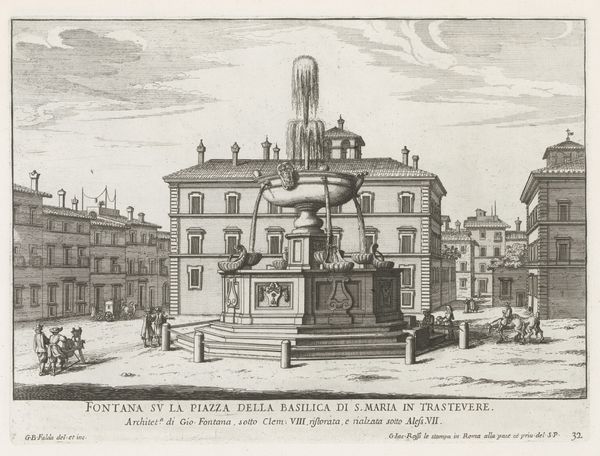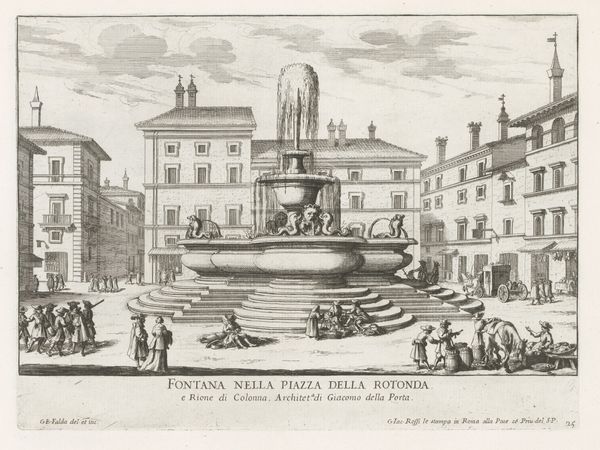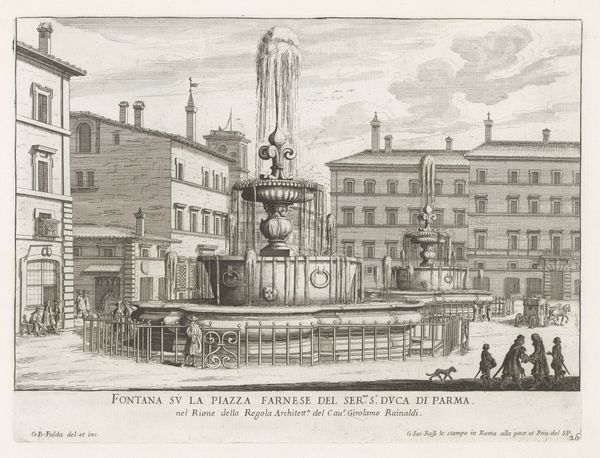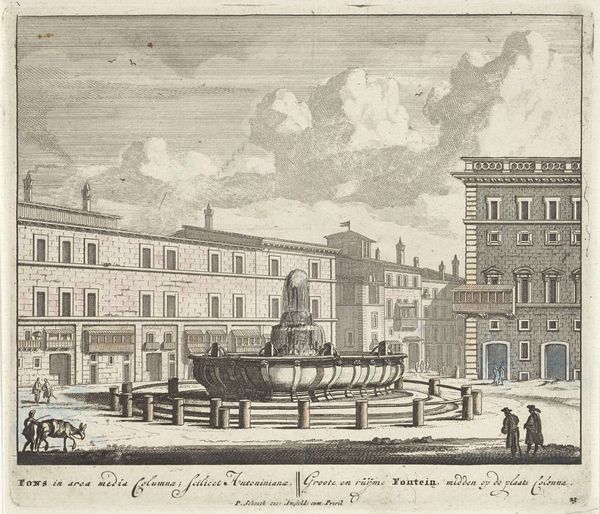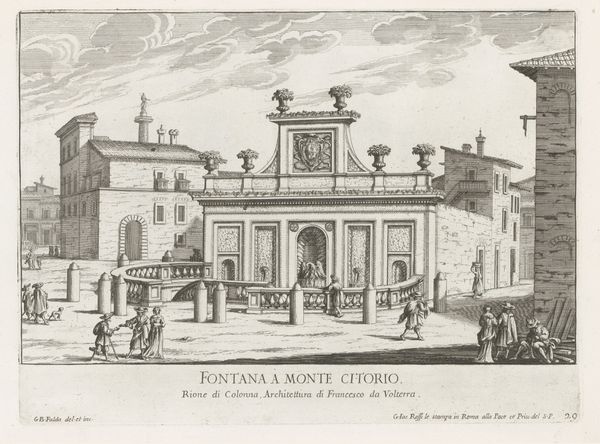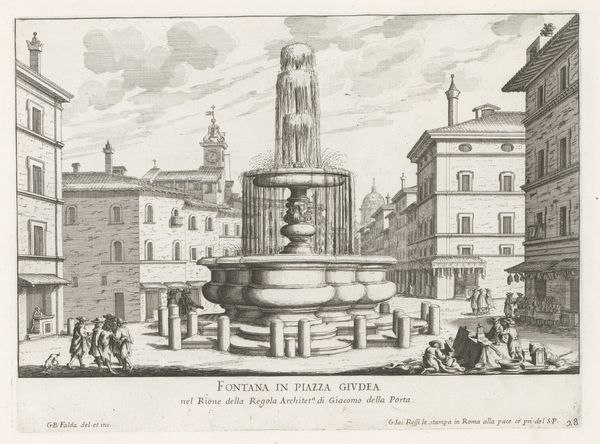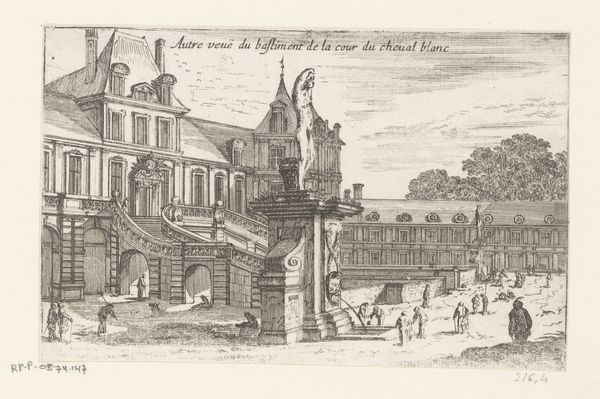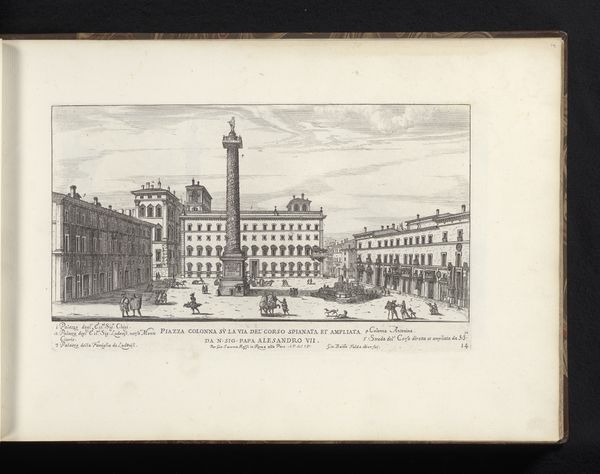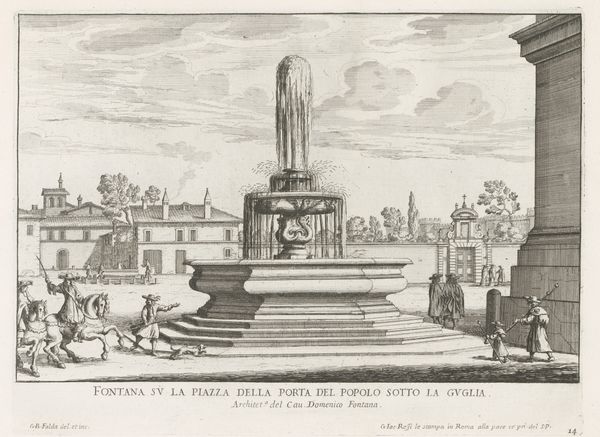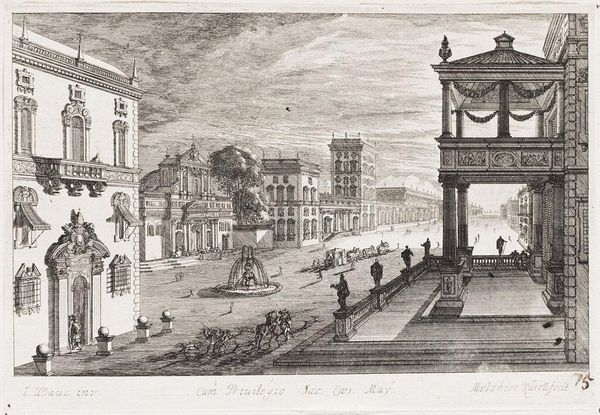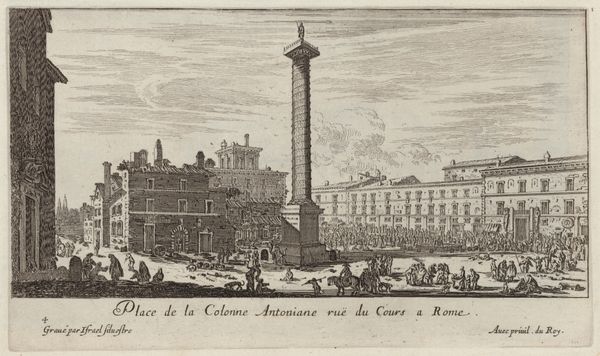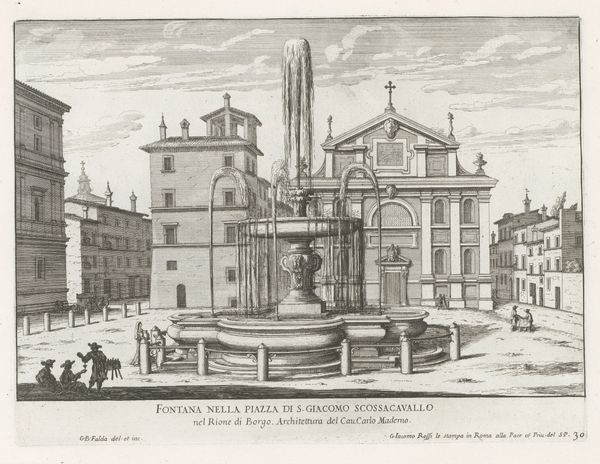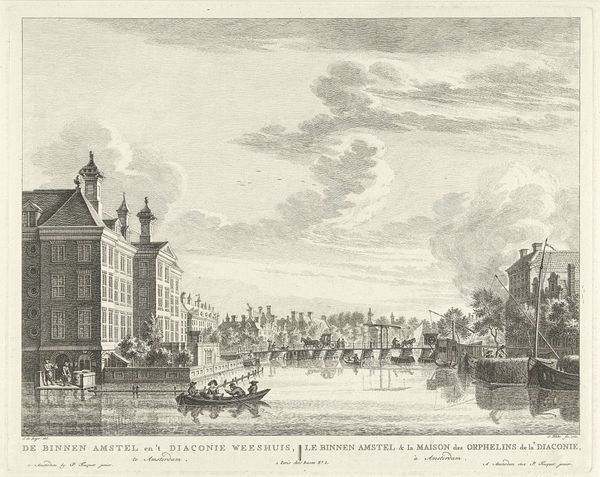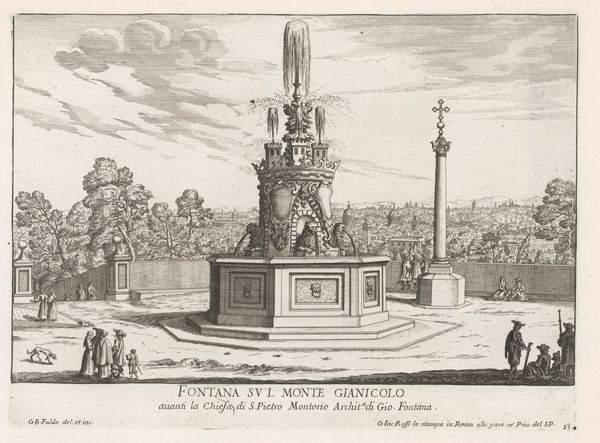
Fontein op Piazza della Madonna dei Monti te Rome 1653 - 1691
0:00
0:00
drawing, print, engraving
#
drawing
#
baroque
# print
#
cityscape
#
history-painting
#
italian-renaissance
#
engraving
Dimensions: height 213 mm, width 289 mm
Copyright: Rijks Museum: Open Domain
Curator: Let’s discuss "Fontein op Piazza della Madonna dei Monti te Rome," a print created by Giovanni Battista Falda between 1653 and 1691. It’s currently held in the Rijksmuseum. What strikes you initially? Editor: It has this tranquil stillness about it. A captured moment, yet buzzing with quiet human activity against this impressively rigid architecture, softened only slightly by that ornate, central fountain. Does that make sense? The etching renders it almost ghostly, like peering into the past. Curator: Yes, and it's important to observe the way Falda uses line to articulate space and form. Notice how the dense, precise engraving defines the fountain’s baroque details and the buildings’ structures, while lighter touches suggest the atmospheric perspective, the airy distance. Editor: Definitely! The depth of field tricks the eye into feeling like we’re *actually* there. Those small figures scattered around–they almost look like they’re waiting for us! It's the epitome of baroque Italian city life, idealized yet realistic in its representation of social life. Curator: Exactly! And, if we think about semiotics here, the fountain functions as a signifier of Rome's civic pride and architectural prowess. The very rigid geometric pattern throughout creates harmony in what seems like simple architectural setting. This image encapsulates Baroque ideals by combining structure and depth, as well as the artist's technique of the light to emphasize that sentiment. Editor: I think also about how these kinds of prints helped disseminate architectural ideas. Imagine the impact this image would have had then—virtually transporting someone to Rome! Not everyone had access to travel as we do today. These are little time capsules with very impactful design! Curator: Precisely. Studying its formal composition helps unlock not only the historical and aesthetic significance of this print but how meaning has layered up across decades of human interaction. Editor: Thinking about this piece, I’m more inspired by the stories held within the captured moment –a dialogue that connects past and present as much as geometry and symmetry connect this artwork together.
Comments
No comments
Be the first to comment and join the conversation on the ultimate creative platform.
